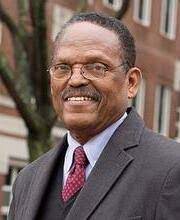Wilson, William Julius

Bio: (1935-) American sociologist. William Julius Wilson studied at Washington State University and taught at the University of Chicago and Harvard. Wilson devoted his academic career to studying racial relations and poverty in the United States. In his book Power, Racism and Privilege (1973), he presents a historical-sociological theory of racism, comparing America and the Republic of South Africa. His theory is based on a conflict approach and creates a historical framework that explains the different ways of creating and maintaining a racial socio-economic hierarchy in both countries.
In The Decline of the Significance of Race (1978), Wilson examines the importance of class affiliation and social mobility for racial relations in America. He concludes that African-Americans, who belong to the middle and upper classes, i.e., those who have graduated from college and are employed in highly paid professions, have resources for upward socio-economic mobility, while African-Americans who belong to the lower class do not have such resources. The African-American Civil Rights Movement of the 1960s diminished the importance of race and enabled the creation of a large African-American middle class, so in the late 1970s, class affiliation affected life chances more than race.
In the book The Truly Disadvantaged (1987), Wilson re-emphasizes the importance of race for the life chances of African Americans and presents data on the highly vulnerable position of urban poor African Americans. In the late nineteenth and early twentieth centuries, African Americans began to move from the rural south to the industrialized north of the United States. Lacking qualifications, they performed the worst industrial jobs and had no chance of advancing. Their poverty and physical isolation in the ghettos led to an increase in white prejudice, which further worsened the position of African Americans. A further deterioration in the situation of a large number of African Americans occurred in the early 1960s, due to several structural factors. The decrease in the number of well-paid jobs in the manufacturing sector in cities, and at the same time the increase in low-paid service jobs, contributed to the reduction of employment, but also to the reduction of real wages of those who were employed. This led to impoverishment, so there was an increase in crime among the male population, as well as an increase in the number of people sentenced to prison terms. The consequence of that was an increased number of single-parent families, in which only the mother was present.
On the other hand, African-Americans, who managed to finish college and find good jobs, left poor urban neighborhoods and thus, even more, increased the poverty of those neighborhoods. By creating a spatial and socio-economic distance between poor and middle-class or rich African-Americans, the social isolation of the former has been significantly increased, as the possibility of their upward class mobility has been drastically reduced. Impoverished urban neighborhoods did not have enough money for schools, so the quality of education dropped significantly. All of these factors contributed, not caused, to the development of a culture of poverty among African Americans that internalized feelings of despair and fatalism. Wilson believes that white Americans, partially consciously, socio-economically endangered poor African Americans, and that this was a reaction of whites dissatisfied with the success achieved by African Americans who became members of the middle and upper class. To more clearly define all these aspects of the urban poverty of African Americans, Wilson introduces the term "subclass" to emphasize the extreme socio-economic marginalization of this population, although he later rejected the term because of the negative connotations it received. Wilson re-examines urban poverty in When Work Disappears (1996) and provides a wealth of qualitative data on the lives of the urban poor.
Fields of research
City Classes Conflict Crime Ghetto Leaders Middle Class Mobility, Social Movements, Social Poverty Power, Political Prejudice Prisons Professions Race Segregation Tradition Underclass Unemployment WorkTheoretical approaches
Afro-American StudiesMain works
Power, Racism, and Privilege: Race Relations in Theoretical and Sociohistorical Perspectives (1973);
The Declining Significance of Race: Blacks and Changing American Institutions (1978);
The Truly Disadvantaged: The Inner-City, The Underclass, and Public Policy (1987);
When Work Disappears (1996);
The Bridge Over the Racial Divide: Rising Inequality and Coalition Politics (1999);
America Becoming: Racial Trends and their Consequences (2001);
More Than Just Race: Being Black and Poor in the Inner City (2009).

